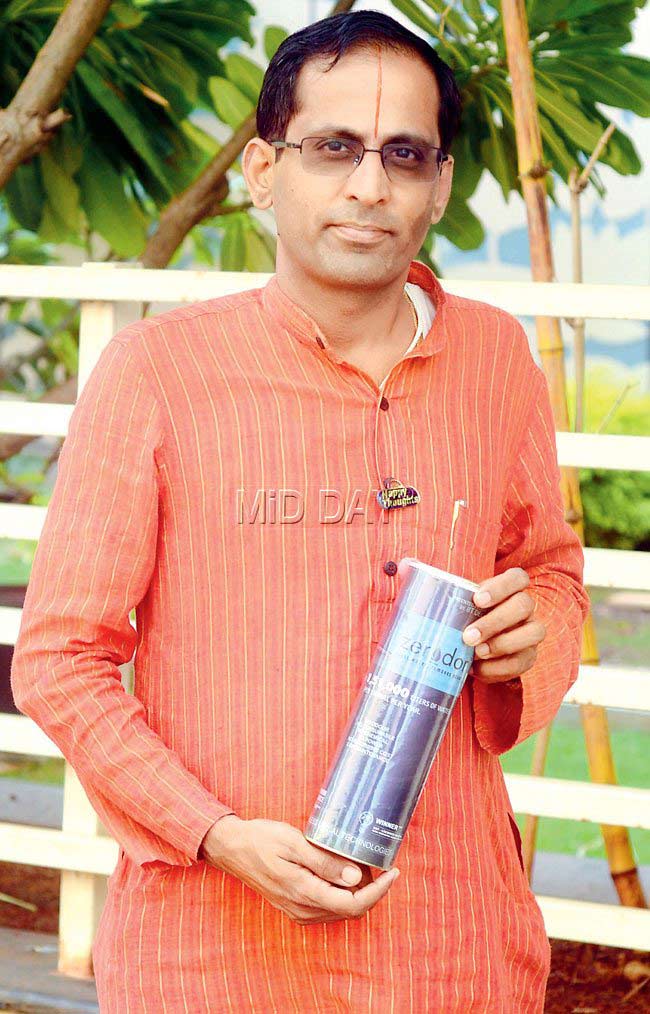Public urinals and an overpowering, nausea-inducing stench come hand in hand, in India at least

Dr Chariar
Public urinals and an overpowering, nausea-inducing stench come hand in hand, in India at least. In a welcome respite from this problem, a recent innovation by an IIT-Delhi professor offers waterless and odourless urinals.

TOILET TRAINING INDIA: Dr Chariar displays a membrane tap, which is used in the waterless odourless urinals innovated by his team. Pic/Kaushik Thanekar
The idea first germinated with the need to conserve fresh water, especially in areas where it cannot be re-used, like in restrooms. “We realised that restrooms are using a lot of fresh water, even when there is no real need. In our country, we still don’t have technology that can make contaminated water fit for re-use. So, we felt the need for water-free urinals,” said Dr V M Chariar, a professor of rural development and technology at IIT-Delhi.
You don’t need water to flush away waste in these urinals, which can be used in homes, institutions and public spaces. Four thousand such urinals have already been installed across the country, using the technology developed by Dr Chariar. While only males can use Chariar’s urinals at present, women-friendly urinals will be launched by November this year.
In terms of design, the urinals look just like conventional urinals, and can be used in the same manner. However, they save close to 1,70,000 litres of water, says Dr Chariar.
“Not only do these urinals reduce usage of fresh water, they lead to smaller quantities of sewage,” added Dr Chariar. These urinals do not need expensive plumbing accessories.
The dry and touch-free operation reduces the chance of spreading communicable diseases. “An added advantage is the presence of an odour trap mechanism, using sealant liquid, microbial control and curtain valves fitted to waterless urinals that help prevent odour developing inside the drainage lines,” he added.
“This technology will cost one-fifth of what similar technologies cost in our country. Also, maintenance is inexpensive. We are thinking of acquiring funds from UNICEF in order to ensure that the project is installed in full force,” he said.
More than funding, Dr Chariar thinks there is immense need for awareness and informative campaigns in order to ensure that the project is implemented in totality. “Sanitation in India is a complex issue, and in order to ensure proper installation of these urinals, we also need to make the public more aware of high-standard sanitation facilities. And, the government will have to play a much bigger role.”
Dr Chariar is already in talks with the ministry as well as the Indian Railways, to install these waterless urinals in public spaces, including railways.
“We can see that many corporate firms are also looking to invest funds into this sector; all they need is proper planning. We have our plans and we only need to ensure that it is implemented as well as maintained well in the future,” he added.
ADVERTISEMENT
 Subscribe today by clicking the link and stay updated with the latest news!" Click here!
Subscribe today by clicking the link and stay updated with the latest news!" Click here!







